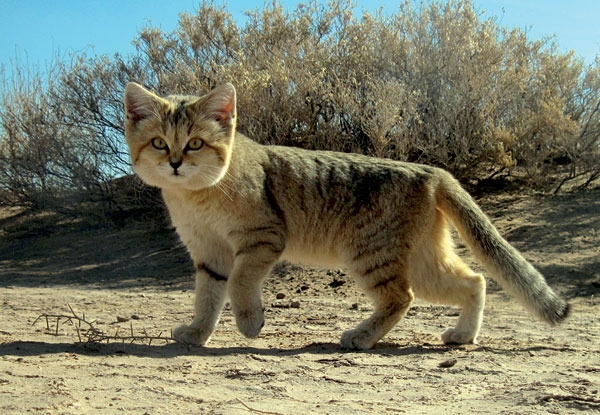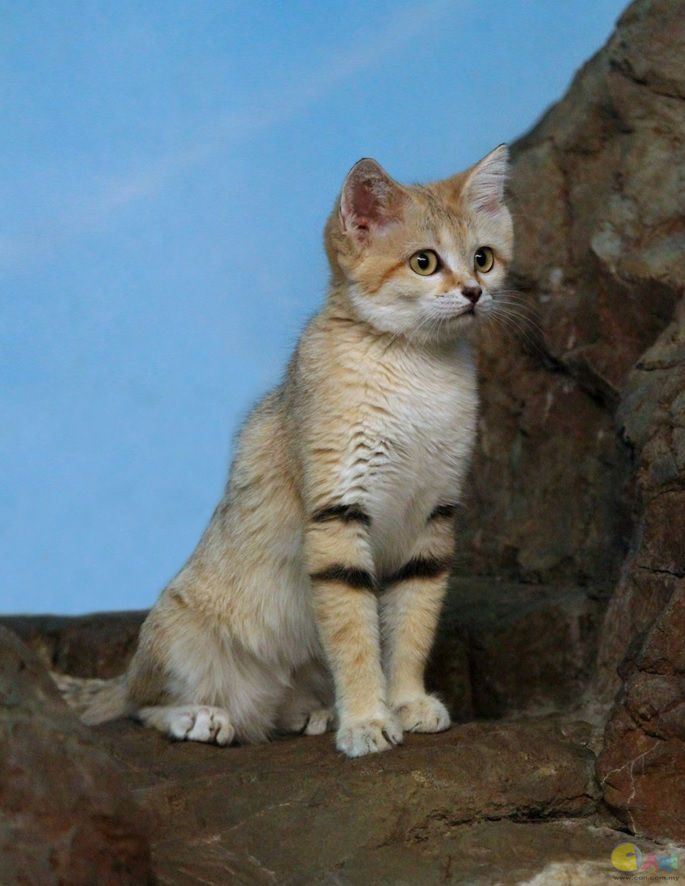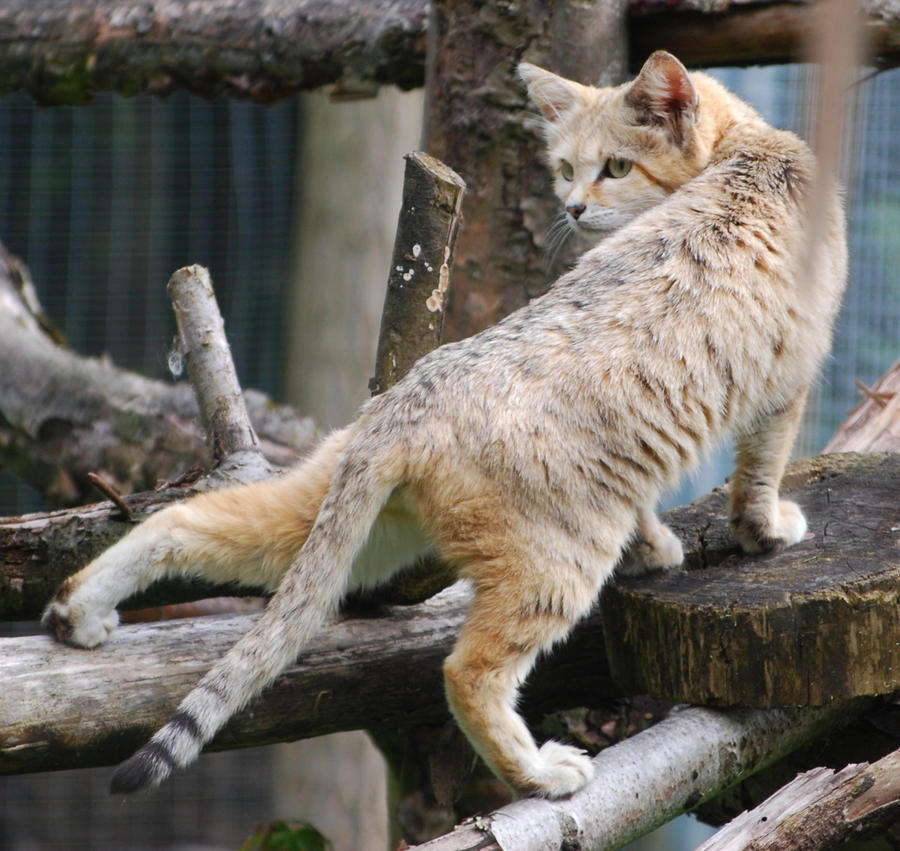|
Kucing Yang Paling Di Idam-Idamkan Semua Orang  Kucing yang paling di idam-idamkan semua orang yang sukakan kucing. 'Sand Cat'  The sand cat (Felis margarita), also known as the sand dune cat, is the only cat living foremost in true deserts. This small cat is widely distributed in the deserts of North Africa, Southwest and Central Asia. Since 2002, it has been listed as Near Threatened by IUCN because the population is considered fragmented and small in size with a declining trend. Sand cats are found in both sandy and stony desert, living in areas far from water. Having thickly furred feet, they are well adapted to the extremes of a desert environment and tolerant of extremely hot and cold temperatures. Victor Loche first described the sand cat in 1858 from a specimen found in the Sahara. He proposed to name the species in recognition of Jean Auguste Margueritte who headed the expedition into the Sahara. Characteristics The sand cat is a small, stocky cat with short legs and a relatively long tail. The fur is of a pale sandy ocherous color. Markings vary between individuals: some have neither spots nor stripes, some are faintly spotted, some have both spots and stripes. There are blackish bars on the limbs, and the tail has a black tip with two or three dark rings alternating with buff bands. In northern regions, the sand cat's winter coat is very long and thick, with hairs reaching up to 2 in (5.1 cm) in length.[6] The lower and upper lips, chin, throat and belly are white. The ears are tawny brown at the base with a black tip. The lower part of the face is whitish, and a faint reddish line runs from the outer corner of each eye, angling down across the cheek. The large and greenish yellow eyes are surrounded by a white ring, and the naked tip of the nose is black. Its head and body length ranges from 39 to 52 cm (15 to 20 in), with a 23.2 to 31 cm (9.1 to 12.2 in) long tail. It weighs from 1.35 to 3.2 kg (3.0 to 7.1 lb).
The auditory bullae and the passages from the external ears to the ear drums are greatly enlarged relative to other small felids. The undersides of the paws are protected from extreme temperatures by a thick covering of fur. The head is broad. The pinna of the ears is triangular, and the ear canal is very wide, giving the cat an enhanced sense of hearing. The ears are large and more pointed than in the manul. They are set low, giving a broad flat appearance to the head. This trait may protect the inner ears from wind-blown sand and aid detection of movements of subterranean prey. A highly developed hearing capacity is important for locating prey, which is not only sparsely distributed in arid environments, but also found underground. The sand cat’s claws on the forelimbs are short and very sharp, the ones on the hind feet are small and blunt. The long hairs growing between its toes create a cushion of fur over the foot pads, helping to insulate them while moving over hot sand. This feature makes the cat's tracks obscure and difficult to identify and follow.        Comel nya tidak terkata!  |






ADVERTISEMENT